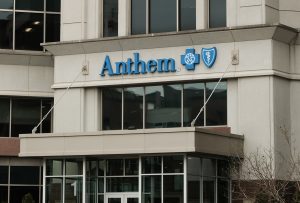Stocks fall, capping Wall Street’s worst quarter since 2008
The surge of coronavirus cases around the world has sent markets to breathtaking drops since mid-February, undercutting what had been a good start to the year.
The surge of coronavirus cases around the world has sent markets to breathtaking drops since mid-February, undercutting what had been a good start to the year.
A dismal unemployment report failed to pop Wall Street’s buoyant mood on Thursday, with stocks running to their third straight day of gains following the federal government’s pledge to shower trillions of dollars on U.S. citizens and commerce.
The S&P 500 was up 4.6%, continuing a rally that has vaulted the index 16% higher since Monday on rising expectations that Congress will soon approve an unprecedented rescue package for the economy.
Stocks closed higher Wednesday, but gave up much of an afternoon rally after CNBC reported that a dispute between Sen. Bernie Sanders and Republicans over unemployment aid could cause the coronavirus aid bill to be delayed.
Stocks sank more than 5% on Wall Street Wednesday, and the Dow erased virtually all its gains since President Donald Trump’s 2017 inauguration.
Markets around the world remain highly volatile as traders see a recession growing more likely and large sections of the economy come closer to shutting down due to the coronavirus outbreak.
The selling began immediately on Wall Street, and losses were sharp enough at the open to trigger a temporary trading halt for the third time in the last two weeks.
Stocks are set for more turbulence following a dizzying week that saw the Dow twice fall by more than 2,000 points and also record it’s biggest point gain ever—1,985 points on Friday.
Across the country, consumer spending—which supports 70% of the economy—is grinding to a halt as fears of the escalating coronavirus pandemic keep people from stores, restaurants, movie theaters and workplaces.
There’s little money to be made—and lots to be lost—by losing their cool when stocks go south, as they did to a historic magnitude over the past week.
The bull officially ran from March 9, 2009, until Feb. 19, 2020, when it began the 26.7% dive that as of Thursday has taken it into bear market territory.

The coronavirus crisis sent stocks into another alarming slide on Wall Street on Thursday, triggering a brief, automatic shutdown in trading for the second time this week.
Stocks fell from the opening of trading in New York, including a 3.7% loss for the S&P 500. The losses deepened as the day progressed, and the Dow Jones industrial average was down more than 1,000 points in the early afternoon.
Wall Street endured another day of dizzying trading Tuesday, whipping up and down with hopes that the U.S. and other governments will cushion the economy from the pain of the coronavirus.
Markets received a bump around midday Tuesday after Vice President Mike Pence said the nation’s big health insurers would cover co-pays for coronavirus testing.
The Dow Jones industrial average on Monday suffered its steepest drop since the financial crisis of 2008.

The steep drop followed similar falls in Europe after a fight among major crude-producing countries jolted investors already on edge about the widening fallout from the outbreak of the new coronavirus.
U.S. stock markets surged Wednesday after Joe Biden’s Super Tuesday performance made a victory by Sen. Bernie Sanders less likely. Health care stocks soared.

Health care stocks led the market’s spurt Wednesday after a strong performance by Joe Biden on Super Tuesday. Among the biggest gainers was Indianapolis-based health insurer Anthem Inc., with a stock surge of 13.4%.
U.S. stocks rebounded from an early fall Tuesday, then sank again, after the Federal Reserve made an emergency rate cut to help support the economy from the impact of the coronavirus outbreak.